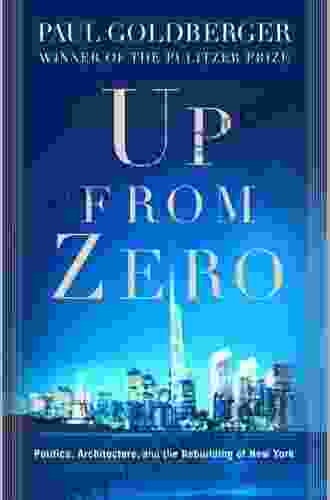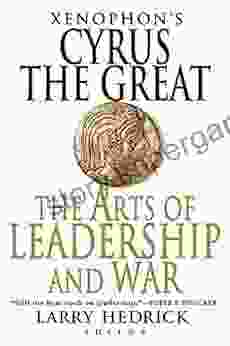Politics, Architecture, and the Rebuilding of New York

4.6 out of 5
| Language | : | English |
| File size | : | 2843 KB |
| Text-to-Speech | : | Enabled |
| Screen Reader | : | Supported |
| Enhanced typesetting | : | Enabled |
| Word Wise | : | Enabled |
| Print length | : | 320 pages |
Throughout history, New York City has been a magnet for people from all over the world, drawn to its promise of opportunity and freedom. This influx of people has created a vibrant and diverse city, but it has also presented challenges, such as how to accommodate the ever-growing population and how to maintain a high quality of life for all residents.
One of the most important ways that New York City has addressed these challenges has been through architecture. The city's iconic skyscrapers, bridges, and parks have not only shaped its physical landscape but have also played a major role in its social and economic development.
The relationship between politics and architecture in New York City is a complex one. On the one hand, politics has often driven architectural decisions. For example, the construction of the Brooklyn Bridge was largely due to political pressure from Brooklyn residents who wanted better access to Manhattan.
On the other hand, architecture has also influenced politics. The city's skyscrapers, for example, have been used as symbols of power and wealth. The Empire State Building, for example, was built during the Great Depression as a symbol of hope and optimism.
The interplay between politics and architecture in New York City is a fascinating one. It is a story of how a city has used architecture to meet its challenges and to shape its identity.
The Early Years
New York City was founded in 1624 by Dutch settlers. The city grew rapidly in the 18th and 19th centuries, as it became a major center of commerce and immigration.
During this period, the city's architecture was largely influenced by European styles. The Federal style, for example, was popular in the early 19th century. This style is characterized by its simple, symmetrical lines and its use of brick and wood.
The Greek Revival style was also popular in the early 19th century. This style is characterized by its use of classical Greek elements, such as columns, pediments, and entablatures.
The Gothic Revival style was popular in the mid-19th century. This style is characterized by its use of pointed arches, ribbed vaults, and stained glass windows.
The Gilded Age
The Gilded Age was a period of great economic growth and prosperity in the United States. This period lasted from the end of the Civil War to the beginning of the 20th century.
During this period, New York City experienced a building boom. Many of the city's most iconic buildings were built during this time, including the Empire State Building, the Chrysler Building, and the Rockefeller Center.
The architecture of the Gilded Age was characterized by its opulence and grandeur. Buildings were often adorned with elaborate carvings, statues, and stained glass windows.
The 20th Century
The 20th century was a period of great change for New York City. The city's population continued to grow, and the city's economy boomed.
During this period, the city's architecture became more modern. The Art Deco style was popular in the early 20th century. This style is characterized by its use of geometric shapes, streamlined forms, and bright colors.
The International Style was popular in the mid-20th century. This style is characterized by its use of simple, functional forms and its emphasis on light and space.
The Brutalist style was popular in the late 20th century. This style is characterized by its use of raw concrete and its emphasis on mass and volume.
The 21st Century
The 21st century has been a period of continued growth and change for New York City. The city's population has continued to grow, and the city's economy has continued to boom.
During this period, the city's architecture has become more diverse. A wide range of styles are now represented in the city, from traditional to modern to postmodern.
One of the most notable trends in 21st-century New York City architecture is the rise of sustainable design. Many new buildings are being built with green materials and technologies, in Free Download to reduce their environmental impact.
New York City is a city that is constantly evolving. The city's architecture is a reflection of this evolution, and it is a testament to the city's resilience and creativity.
As New York City continues to grow and change, its architecture will continue to evolve. It is impossible to say what the city will look like in the future, but it is certain that its architecture will continue to be a reflection of its people and its time.

4.6 out of 5
| Language | : | English |
| File size | : | 2843 KB |
| Text-to-Speech | : | Enabled |
| Screen Reader | : | Supported |
| Enhanced typesetting | : | Enabled |
| Word Wise | : | Enabled |
| Print length | : | 320 pages |
Do you want to contribute by writing guest posts on this blog?
Please contact us and send us a resume of previous articles that you have written.
 Book
Book Novel
Novel Page
Page Chapter
Chapter Text
Text Story
Story Genre
Genre Reader
Reader Library
Library Paperback
Paperback E-book
E-book Magazine
Magazine Newspaper
Newspaper Paragraph
Paragraph Sentence
Sentence Bookmark
Bookmark Shelf
Shelf Glossary
Glossary Bibliography
Bibliography Foreword
Foreword Preface
Preface Synopsis
Synopsis Annotation
Annotation Footnote
Footnote Manuscript
Manuscript Scroll
Scroll Codex
Codex Tome
Tome Bestseller
Bestseller Classics
Classics Library card
Library card Narrative
Narrative Biography
Biography Autobiography
Autobiography Memoir
Memoir Reference
Reference Encyclopedia
Encyclopedia Marion Lennox
Marion Lennox Mark Halperin
Mark Halperin Mario Frau
Mario Frau Russell Blackford
Russell Blackford Marisa Mackle
Marisa Mackle Mary Mallory
Mary Mallory Nordine Zouareg
Nordine Zouareg Miles Adkins
Miles Adkins Marlee Grace
Marlee Grace Mark Mcgovern
Mark Mcgovern Maurice Samuels
Maurice Samuels Nick Patterson
Nick Patterson Ramesh H
Ramesh H Joel Paris
Joel Paris Monika Khatwani
Monika Khatwani Mark Fellowes
Mark Fellowes Roxanne Hawn
Roxanne Hawn Matt Stone
Matt Stone R G Robertson
R G Robertson Susan Sly
Susan Sly
Light bulbAdvertise smarter! Our strategic ad space ensures maximum exposure. Reserve your spot today!

 Dylan MitchellThe Lord Lucan Conspiracy Files: Unraveling the Mystery of the Aristocratic...
Dylan MitchellThe Lord Lucan Conspiracy Files: Unraveling the Mystery of the Aristocratic...
 Brady MitchellIndiana Covered Bridges: A Journey Through History and Architectural Beauty
Brady MitchellIndiana Covered Bridges: A Journey Through History and Architectural Beauty Kyle PowellFollow ·2.5k
Kyle PowellFollow ·2.5k Reginald CoxFollow ·8.2k
Reginald CoxFollow ·8.2k Gustavo CoxFollow ·16.1k
Gustavo CoxFollow ·16.1k Marc FosterFollow ·13.4k
Marc FosterFollow ·13.4k John Dos PassosFollow ·16.4k
John Dos PassosFollow ·16.4k VoltaireFollow ·12.3k
VoltaireFollow ·12.3k Chance FosterFollow ·12.7k
Chance FosterFollow ·12.7k Fredrick CoxFollow ·5.2k
Fredrick CoxFollow ·5.2k

 Roberto Bolaño
Roberto BolañoUnveiling the Beauty and History of the Medici Iris: A...
In the realm of...

 Theodore Mitchell
Theodore MitchellImproving Gut Health in Poultry: Unlocking the Path to...
In the ever-evolving field of...

 Victor Hugo
Victor HugoPersonalized Medicine with a Nanochemistry Twist:...
The future of healthcare...

 George Martin
George MartinA Year Of Wine: Perfect Pairings Great Buys And What To...
## Year of Wine: An Epic Journey Through the...

 Tom Hayes
Tom HayesDelve into the Enigmatic World of Southern Africa's...
Embark on a captivating journey through the...
4.6 out of 5
| Language | : | English |
| File size | : | 2843 KB |
| Text-to-Speech | : | Enabled |
| Screen Reader | : | Supported |
| Enhanced typesetting | : | Enabled |
| Word Wise | : | Enabled |
| Print length | : | 320 pages |










